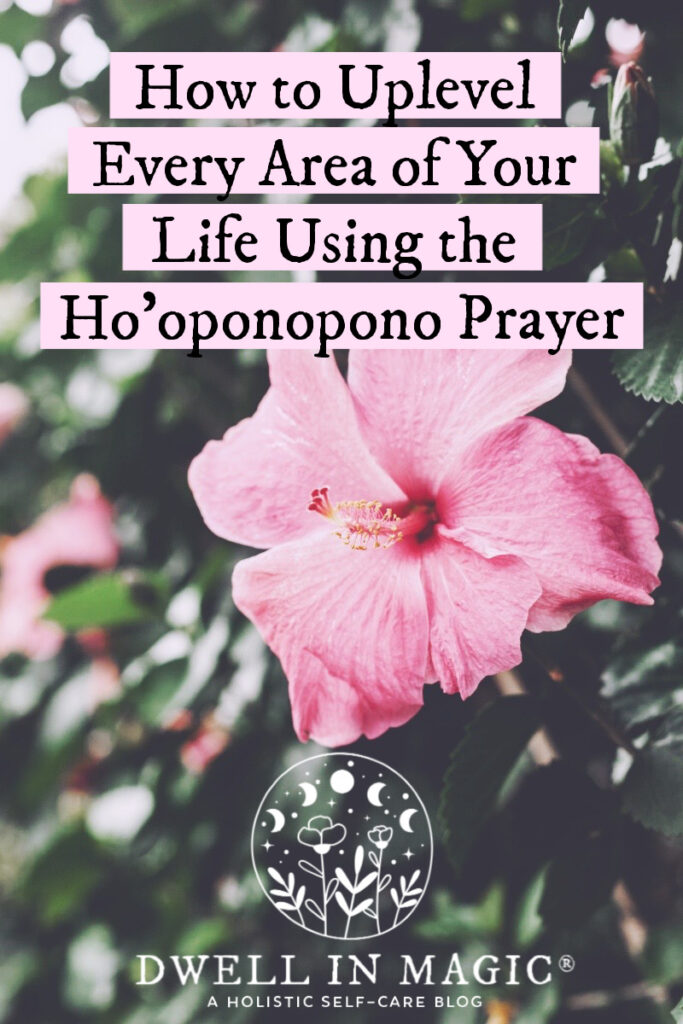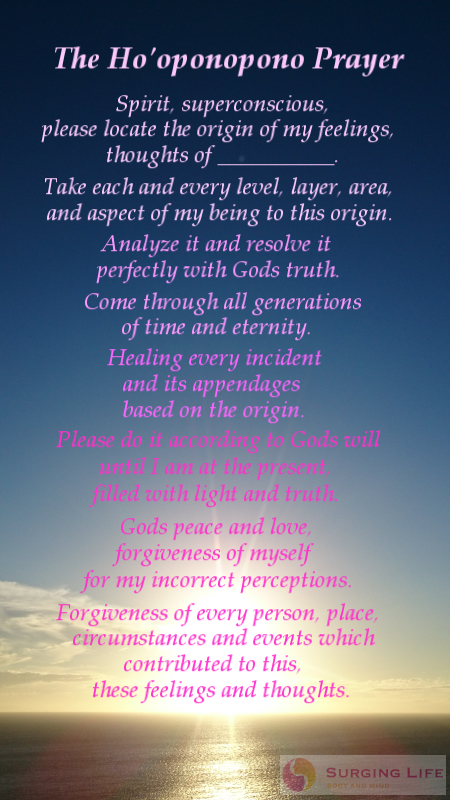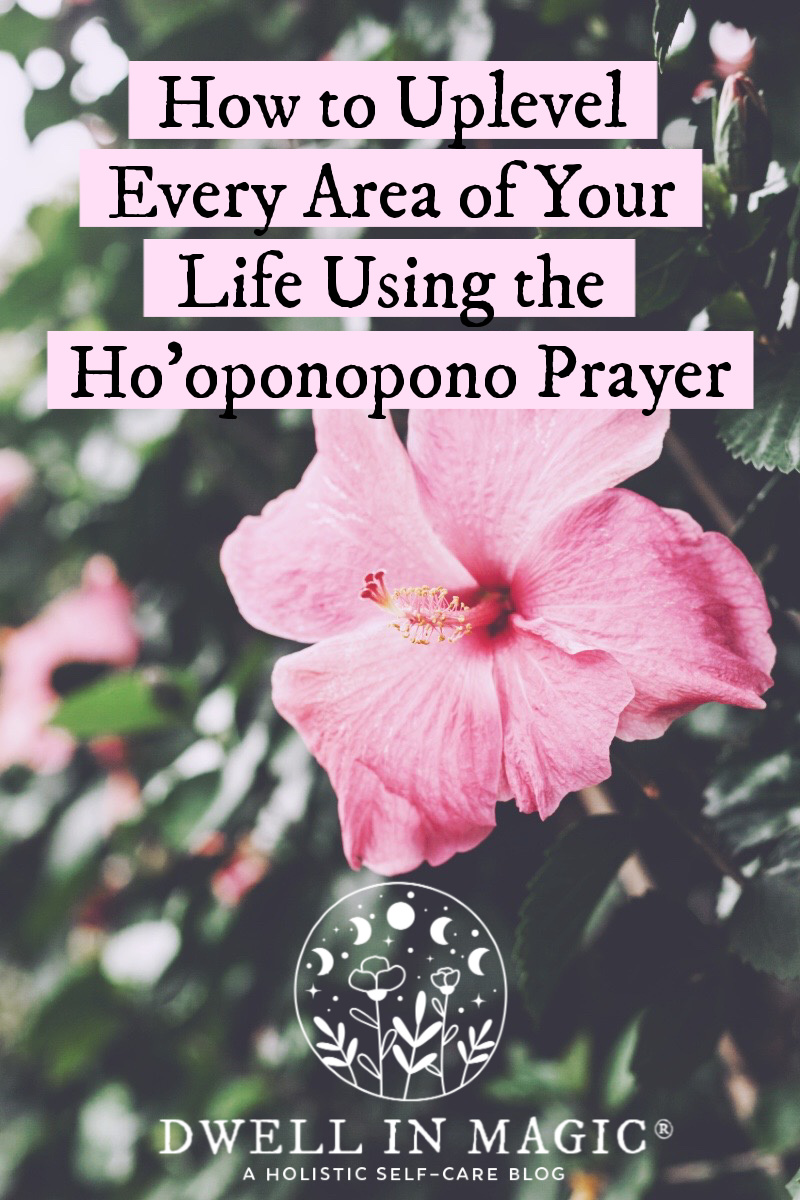In this article, we will explore whether Ho’oponopono, a traditional Hawaiian practice, can be beneficial in improving self-esteem. We will discuss the principles behind Ho’oponopono and how it can be applied to cultivate self-acceptance and self-worth. Additionally, we will delve into the potential benefits and limitations of using Ho’oponopono as a tool for enhancing self-esteem. By the end of this article, you will have a better understanding of whether Ho’oponopono can be a helpful practice for developing a positive self-image.

Understanding Ho’oponopono
Ho’oponopono is an ancient Hawaiian practice that is deeply rooted in the culture and spirituality of the Hawaiian people. The word itself can be translated as “to make right” or “to correct.” It is a traditional method of reconciliation and forgiveness, aimed at resolving conflicts and restoring harmony within individuals, families, and communities.
Origins of Ho’oponopono
Ho’oponopono has its origins in the traditional Hawaiian belief system and has been practiced by native Hawaiians for centuries. It was traditionally conducted by a family elder or spiritual leader, who guided the process of reconciliation and forgiveness among family members. The practice was seen as essential for maintaining the balance and well-being of the community.
Meaning of Ho’oponopono
At its core, Ho’oponopono is based on the belief that we are all interconnected and that our actions and thoughts have a direct impact on others. When conflicts arise or negative emotions are present, Ho’oponopono offers a way to heal and restore that balance. It is considered a spiritual practice that focuses on forgiveness, gratitude, and love.
Key principles of Ho’oponopono
Ho’oponopono is based on a few key principles that guide the practice:
-
Taking responsibility: Ho’oponopono emphasizes personal responsibility for one’s thoughts, actions, and emotions. It encourages individuals to acknowledge and accept their part in conflicts or negative situations.
-
Forgiveness: Forgiveness is a central aspect of Ho’oponopono. It involves letting go of grudges, resentments, and negative emotions towards oneself and others. By forgiving, individuals can release the burden of past experiences and create space for healing.
-
Gratitude: Expressing gratitude is an important aspect of Ho’oponopono. It allows individuals to focus on the positive aspects of their lives and cultivate a sense of appreciation for what they have. Gratitude helps shift the focus from negativity to positivity.
-
Love: Love, in Ho’oponopono, is seen as a powerful force for healing and transformation. By cultivating self-love and love for others, individuals can create a positive and harmonious environment within themselves and their relationships.
The Relationship between Self-esteem and Ho’oponopono
Exploring the concept of self-esteem
Self-esteem refers to the overall evaluation of oneself, encompassing beliefs, thoughts, and feelings about one’s worth and abilities. It plays a significant role in shaping an individual’s mental health, relationships, and overall well-being. A healthy level of self-esteem is essential for personal growth and resilience.
How low self-esteem affects individuals
Low self-esteem can have detrimental effects on various aspects of an individual’s life. It can lead to feelings of self-doubt, worthlessness, and inadequacy. People with low self-esteem often struggle with assertiveness, have difficulty setting boundaries, and may experience heightened levels of stress, anxiety, and depression. Low self-esteem can also negatively impact relationships, career, and overall life satisfaction.
The potential of Ho’oponopono to improve self-esteem
The practice of Ho’oponopono offers a unique approach to improving self-esteem. By acknowledging and taking responsibility for one’s thoughts, actions, and emotions, individuals can begin to shift their mindset and increase their self-worth. The principles of forgiveness, gratitude, and love in Ho’oponopono can help individuals let go of negative self-perceptions, heal past wounds, and cultivate a stronger sense of self.
Applying Ho’oponopono Techniques for Self-esteem Improvement
Self-forgiveness in Ho’oponopono
Self-forgiveness is a fundamental aspect of Ho’oponopono. It involves recognizing and acknowledging one’s own mistakes, shortcomings, and negative beliefs, and offering oneself forgiveness and compassion. Through self-forgiveness, individuals can release the burden of self-blame and guilt, allowing for personal growth and healing.
Letting go of past traumas and negative emotions
Ho’oponopono provides a framework for individuals to release past traumas and negative emotions that may be impacting their self-esteem. By acknowledging and addressing these unresolved emotions, individuals can begin to heal and let go of the emotional baggage that weighs them down. This process allows for personal growth and the development of a healthier self-image.
Practicing gratitude and self-love
Gratitude and self-love are powerful tools in improving self-esteem. Ho’oponopono encourages individuals to cultivate a sense of gratitude for what they have, as well as love and acceptance for themselves. By focusing on the positive aspects of their lives and embracing self-love, individuals can shift their mindset and develop a more positive self-perception.
Connecting with your inner child
Ho’oponopono recognizes the importance of connecting with one’s inner child. Often, low self-esteem is rooted in childhood experiences and beliefs. By reconnecting with the inner child and addressing any unresolved wounds or negative beliefs from the past, individuals can heal and nurture their self-esteem.
Scientific Evidence on Ho’oponopono and Self-esteem
Research studies on Ho’oponopono’s impact on self-esteem
While the practice of Ho’oponopono has a long history in Hawaiian culture, scientific research on its effectiveness is limited. However, some studies have explored its impact on various aspects of well-being, including self-esteem. These studies have shown promising results, indicating that Ho’oponopono may contribute to improved self-esteem and overall well-being.
Findings and observations from experts
Experts who have studied and practiced Ho’oponopono have observed positive changes in individuals’ self-esteem. They have noted that the practice helps individuals release negative self-perceptions, cultivate self-compassion, and increase their sense of self-worth. These findings align with the principles of Ho’oponopono, which emphasize self-responsibility, forgiveness, gratitude, and love.
Limitations and gaps in current scientific knowledge
Despite the positive findings and observations, it is important to acknowledge the limitations and gaps in current scientific knowledge regarding Ho’oponopono. The research conducted so far is limited in scope and sample size, making it difficult to generalize the results. More rigorous scientific studies are needed to further understand the potential benefits of Ho’oponopono for self-esteem.

Personal Experiences and Testimonials
Individual stories of self-esteem improvement through Ho’oponopono
Many individuals have shared their personal stories of self-esteem improvement through the practice of Ho’oponopono. They report experiencing a sense of peace, self-acceptance, and increased self-worth. These stories highlight the transformative power of Ho’oponopono in fostering self-esteem and personal growth.
Sharing personal transformations and growth
Applying the principles of Ho’oponopono has allowed individuals to transform their lives and improve their self-esteem. They have learned to let go of past traumas, forgive themselves and others, and embrace gratitude and self-love. These personal transformations have led to improved self-esteem, confidence, and a more positive outlook on life.
Insights gained from applying Ho’oponopono techniques
Through practicing Ho’oponopono, individuals have gained valuable insights into the relationship between self-esteem and personal growth. They have learned to take responsibility for their emotions and beliefs, actively work on forgiveness and self-compassion, and cultivate gratitude and self-love. These insights have contributed to their journey of self-improvement and increased self-esteem.
Challenges and Potential Roadblocks
Resistance to change
Implementing Ho’oponopono techniques for self-esteem improvement may face resistance from individuals who are resistant to change or find it challenging to let go of past grudges and negative emotions. Overcoming this resistance requires patience, persistence, and a willingness to confront and address deep-rooted beliefs and emotions.
Overcoming deep-rooted limiting beliefs
Deep-rooted limiting beliefs can be a significant roadblock in improving self-esteem through Ho’oponopono. These beliefs may have been ingrained from childhood experiences or societal conditioning. Overcoming these beliefs requires consistent practice, self-reflection, and seeking support from qualified practitioners or therapists.
Maintaining consistency in practice
Consistency is crucial in Ho’oponopono practice for self-esteem improvement. It requires a commitment to regular self-inquiry, forgiveness, gratitude, and self-love. However, maintaining consistency can be challenging, especially when faced with busy schedules, distractions, or other life demands. Setting aside dedicated time for practice and incorporating it into daily routines can help overcome this challenge.

Ho’oponopono in Combination with Other Self-esteem Boosting Techniques
Exploring complementary practices
Ho’oponopono can be supplemented with other self-esteem boosting techniques to enhance its effectiveness. Practices such as positive affirmations, journaling, cognitive-behavioral therapy, and mindfulness meditation can complement Ho’oponopono by reinforcing positive self-beliefs, addressing cognitive distortions, and cultivating self-awareness.
The synergy between Ho’oponopono and affirmations
Affirmations, when combined with Ho’oponopono, can amplify the healing effects on self-esteem. Affirmations involve repeating positive statements about oneself, which can help reprogram negative self-beliefs and reinforce positive self-perceptions. When combined with the principles of Ho’oponopono, affirmations become a powerful tool for self-transformation.
Integration with mindfulness or meditation
Mindfulness and meditation practices can be integrated into Ho’oponopono for self-esteem improvement. These practices help individuals develop non-judgmental awareness of their thoughts, emotions, and bodily sensations. By incorporating mindfulness and meditation into Ho’oponopono, individuals can deepen their self-inquiry, cultivate self-compassion, and foster self-esteem.
Expert Opinions on the Effectiveness of Ho’oponopono for Self-esteem
Insights from Ho’oponopono practitioners
Ho’oponopono practitioners have witnessed firsthand the transformative effects of the practice on self-esteem. They have observed individuals releasing deeply held negative beliefs, letting go of past traumas, and experiencing a greater sense of self-worth. These insights affirm the potential of Ho’oponopono to improve self-esteem.
Interpretations from psychologists and therapists
Psychologists and therapists recognize the value of Ho’oponopono in improving self-esteem. They view the practice as a holistic approach to healing that addresses the interplay between thoughts, emotions, and beliefs. They emphasize the importance of self-forgiveness, gratitude, and love in fostering self-esteem and personal growth.
Balancing differing perspectives
While many experts acknowledge the potential of Ho’oponopono for improving self-esteem, there are also differing perspectives. Some experts may question the scientific validity of the practice or recommend integrating it with evidence-based therapeutic approaches. Balancing these differing perspectives allows for a comprehensive understanding and exploration of Ho’oponopono’s effectiveness.

Considerations for Implementing Ho’oponopono
Seeking guidance from a qualified practitioner
Implementing Ho’oponopono for self-esteem improvement may benefit from seeking guidance from a qualified practitioner. A practitioner can provide personalized support, offer guidance on techniques, and help navigate any challenges or resistance that may arise during the practice.
Setting realistic expectations
It is important to set realistic expectations when practicing Ho’oponopono for self-esteem improvement. Healing and self-improvement are gradual processes that require patience and consistent practice. Setting small, achievable goals and celebrating progress along the way can help individuals remain motivated and committed to their journey.
Adapting the practice to individual needs
Ho’oponopono is a flexible practice that can be tailored to individual needs and preferences. Some individuals may benefit from incorporating specific techniques or rituals into their practice, while others may find solace in adapting the principles of Ho’oponopono to their existing spiritual or cultural beliefs. It is essential to adapt the practice in a way that feels authentic and resonates with individual values.
Maintaining a regular practice
Consistency is key in reaping the benefits of Ho’oponopono for self-esteem improvement. Establishing a regular practice routine, whether daily or weekly, helps individuals anchor the practice into their lives. It is through regular practice that the transformative effects of Ho’oponopono can be experienced and integrated into daily life.
Conclusion
In conclusion, Ho’oponopono offers a unique and spiritual approach to improving self-esteem. Its principles of self-responsibility, forgiveness, gratitude, and love provide a framework for personal growth, healing, and transformation. Personal experiences, expert insights, and limited scientific research suggest that Ho’oponopono can contribute to improved self-esteem and overall well-being. While challenges and limitations exist, the potential benefits of Ho’oponopono invite further exploration and personal experimentation. By integrating Ho’oponopono with complementary techniques and seeking guidance from qualified practitioners, individuals can embark on a journey towards improved self-esteem and greater self-acceptance.

